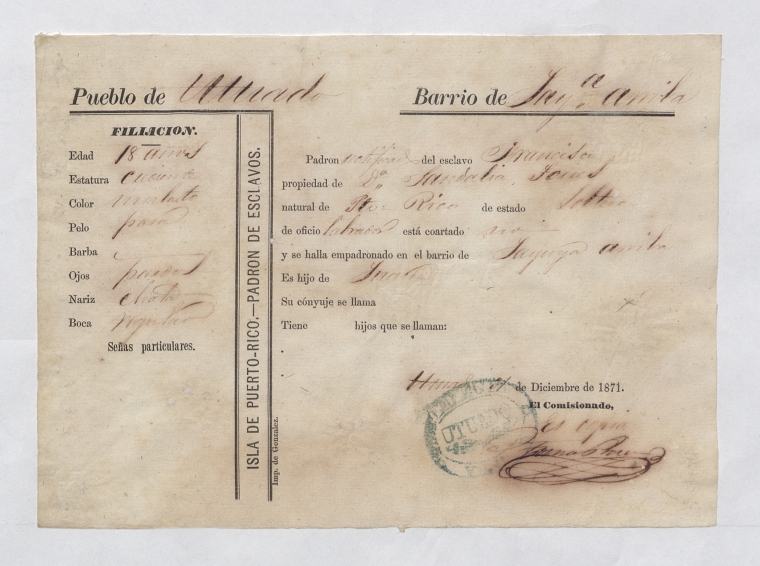On March 22, 1873, the Spanish National Assembly legally ended slavery in Puerto Rico, freeing 29,000 men, women, and children — 5% of the population at the time. However, the enslaved people were required to work for three more years for their former owners, who were financially compensated by Spain for the loss of their human property. They had no political rights for five years following the edict.
Spain had relied on slavery for four centuries to power gold mining and then the sugar and tobacco industries in Puerto Rico. Taino people were enslaved by the earliest Spanish explorers, and large numbers of people were brought into slavery from Africa beginning in the 1500s. In the 19th century, anti-slavery activism began to be significant in Europe and the Americas. In 1870, Spain declared that all slaves of age 60 or older would be freed, along with any children born after the passage of the law. The same law freed slaves belonging to the government in Puerto Rico.
The abolitionist movements in Puerto Rico and in Spain were helped by pressure from the United States and the United Kingdom, both of which had outlawed slavery by this time.
Abolitionist movements
Abolitionists bought and freed slaves, especially the children of enslaved people, who from 1818 on could be bought after they were baptized and set free at that time.
Julio Vizcarrondo Coronado founded the Spanish Abolitionist Society in 1865. They published a newspaper called The Abolitionist. Other abolitionists included José Julián Acosta, Francisco Mariano Quiñones, Ramón Emeterio Betances, and Segundo Ruiz Belvis.
There were also uprisings among the enslaved people, and the abolitionist movement was connected with efforts to gain independence from Spain. The brief rise of a republican government in Spain led to the emancipation proclamation. The following year, the republic fell and the monarchy returned to power in Spain. Puerto Rico did not resume slavery, however.
Emancipation Day
Many formerly enslaved people continued to work for their former masters after 1876, but for wages. Researchers on the subject believe that much of the history of this time has been suppressed.
Rep. Charles Rangel spoke in the House of Representatives about the decision by Great Britain in their emancipation proclamation “not to compensate the former slaves for their oppression, humiliation and degradation but rather to pay the slave-owners for the loss of their property.” The same thing happened in Puerto Rico.
Emancipation Day is a day of celebration, of music and dance honoring the people who fought against the great evil of slavery, and also a day for education and reflection. As slavery has been largely eradicated in the world, one day colonialism will also be eradicated. Ending the colonial relationship between Puerto Rico and the United States will be a significant step in that direction. Reach out to your legislators now and let them know that you want to see them on the right side of history.








No responses yet